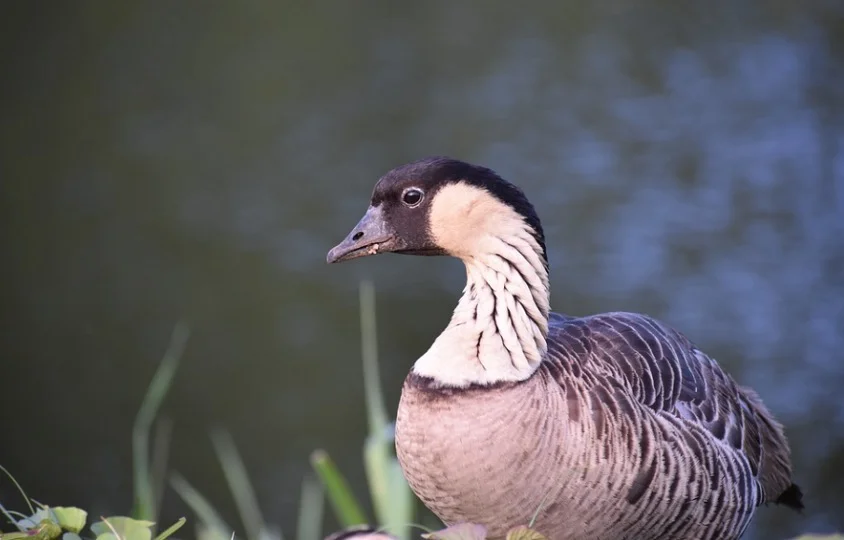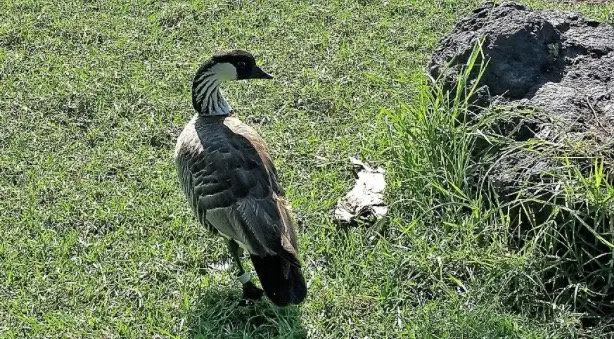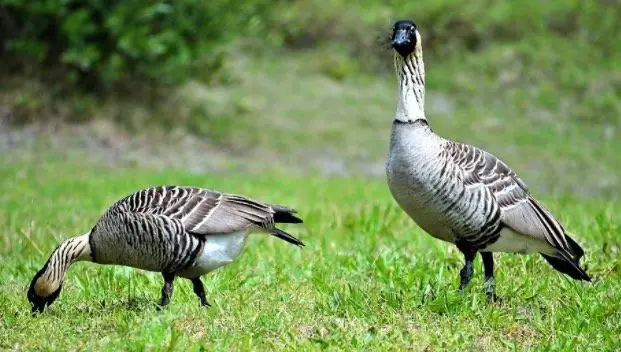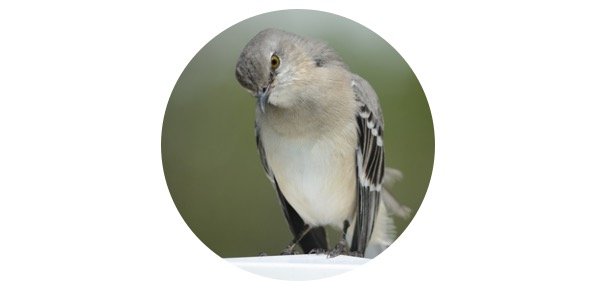Hawaii State Bird: Description, Pictures, & Fun Facts

Table of Contents
What is Hawaii State Bird?
Hawaii is a tiny island state 2,000 miles west of the United States mainland. With a population of little more than 1.4 million inhabitants, it is the 47th smallest state and the 40th most populated. The Hawaiian monk seal is the official mammal of Hawaii, but what is the state bird?
In 1957, the state of Hawaii designated the Nene (Branta sandwicensis), often known as the Hawaiian Goose, as its official bird. The nene (pronounced nay nay), a big, cream, tan, and black-colored bird unique to the Hawaiian island of Oahu, varies significantly from the rest of the goose family.
This endangered bird is the only one of the island’s nine goose species that has kept its capacity to fly; the others have degenerated, becoming flightless.

Why is Nene Goose Hawaii State Bird?
Hawaii picked the nene, often known as the Hawaiian goose, as its official bird. The nene used to occupy the islands, but just approximately 2,000 to 4,000 birds survive now. The nene was chosen as Hawaii’s national bird as part of a public education programme to educate its people about the significance of maintaining nature and native species.
It also successfully advocated for the nene’s inclusion on the Federal List of Endangered Species in 1967. The state of Hawaii has collaborated with the Wildfowl and Wetlands Trust (WWT) in England to raise nene outside of Hawaii and subsequently restore the birds.
This reduces inbreeding. Only 20 to 30 birds existed in 1949, but the late Sir Peter Scott brought two of them to England and nurtured them. More than 200 birds have been restored to the Hawaiian islands as a result of the two relocated birds.
When did Nene Goose become Hawaii State Bird?
The state of Hawaii did not designate its official bird until 1957. Hawaii, like Alaska, remained a US territory at the time. Both were admitted to the Union as states in 1959. Hawaii technically had a state bird before it became a state.
What does Hawaii State Bird look like?
If you’ve ever seen a Canadian goose, you’ll recognize the nene. Both have a blackhead on their head, and a matching crown, bill, feet, and face. This is a contrast to their cream-colored neck, which transitions into brown or grey plumage.
The nene is said to have developed from the Canadian goose and arrived to the island via floating on trash. The nene may grow to be up to 25 inches long from head to tail. It has a wingspan of 11 to 12 inches. These little birds range in weight from 3.3 to 6.6 pounds.

How do Hawaii State Bird behave?
These birds may be found in the wild in the Hawaiian islands of Hawaii, Kauai, Maui, Molokai, and Oahu. They marry and stay monogamous for the rest of their lives. When two birds fall in love, the male Hawaiian goose initiates a discreet courting by scaring off any competing males that approach.
This shows the female geese that he is concerned. These geese normally nest between October and March, although their nesting season may extend as early as August and last until April. In each brood, the female nene lays one to five eggs.
As the bird incubates them, the oval-shaped, cream or white eggs may blotch. Incubation takes 30 to 32 days, during which time the male nene defends the nest and looks after his partner. Each year, the couple has just one brood.
The nene goslings only require a few hours after hatching before they can toddle out of the nest to feed themselves. These meals are overseen by their parents. The young begin to fly at the age of 80 days, but it may take up to 100 days for them to soar.
They fly with the flock to which their parents belong for roughly a year before venturing off on their own. Their parents will be preoccupied with the next mating season, producing siblings for the newborn birds.
Young nenes acquire sexual maturity around the age of two to three years and begin looking for their own spouse. They will also construct a nest, court, marry, and mate each year, producing a brood of goslings.
Do Nene Goose form communities?
Nenes create nuclear families within flocks, therefore they do have a sense of belonging to a group. They do not, however, share their nest. The flock works collectively to make minor migratory modifications.
Nenes often live on steep volcanic slopes in places dominated by scrub vegetation. They also like to settle in remote regions such as meadows, pastures, and scrub woodlands. Hawaiian geese aren’t choosy about human interaction, so if they see a park or golf course they like, they’ll make it their home.
You just play through it without touching or hurting the bird, since doing so would be a federal violation punishable by a $50,000 punishment.
What do Nene Goose eat?
The nene feeds on berries, flowers, leaves, and seeds. Its vegetarian diet includes a variety of tropical delicacies. While most birds take a limited number of foods, the Hawaiian geese will consume more than 30 plant species, the majority of which are native to the state but a few of which are imported.
How does the Nene Goose differ from other Geese?
The nene prefers to spend the full year in the same environment. They are the only geese on the islands that can fly, albeit not for great distances. They move small distances inside the islands in search of better food sources.
The nene can fly in extremely brief bursts, but the other eight goose species cannot. They, too, do not swim. These birds are seldom seen on the water. When they do enter the water, they tend to stroll or wade through it.
Their feet have adapted for walking and lack part of the webbing seen in other varieties of geese. Their feet also adapted to offer a greater grip on the island’s volcanic soil. They developed to walk rather than waddle like other geese.









